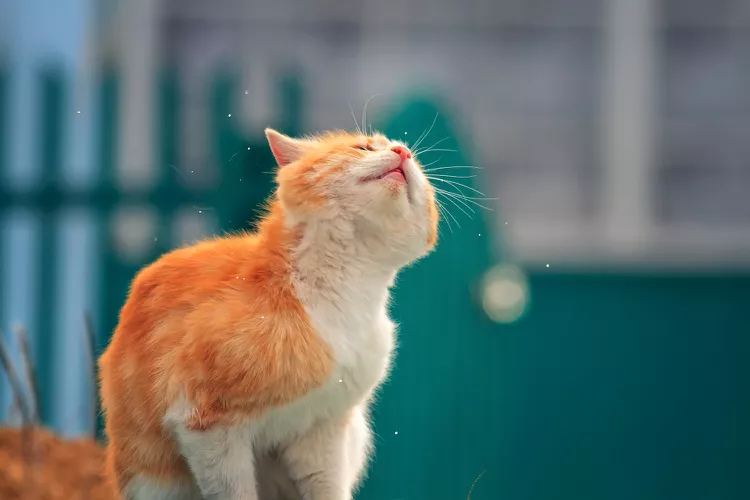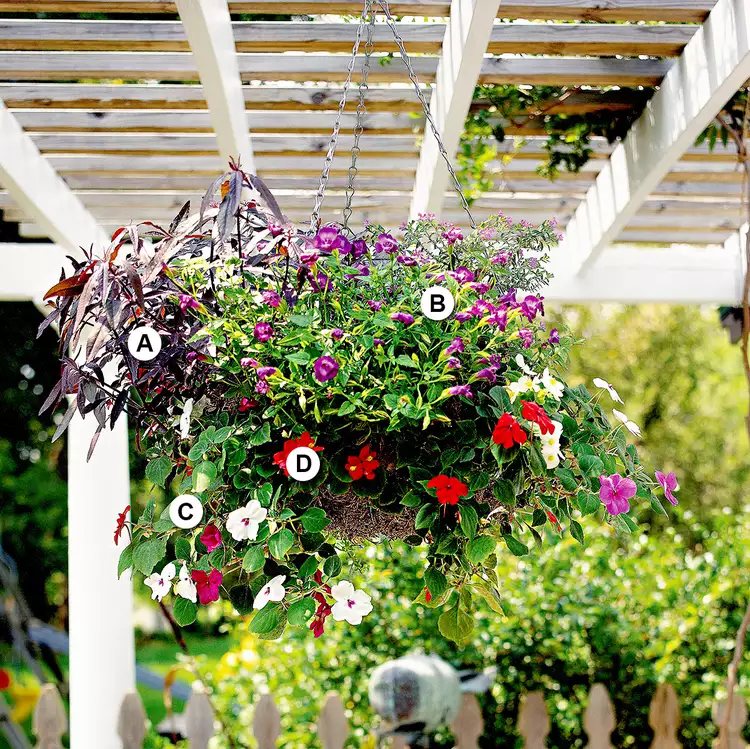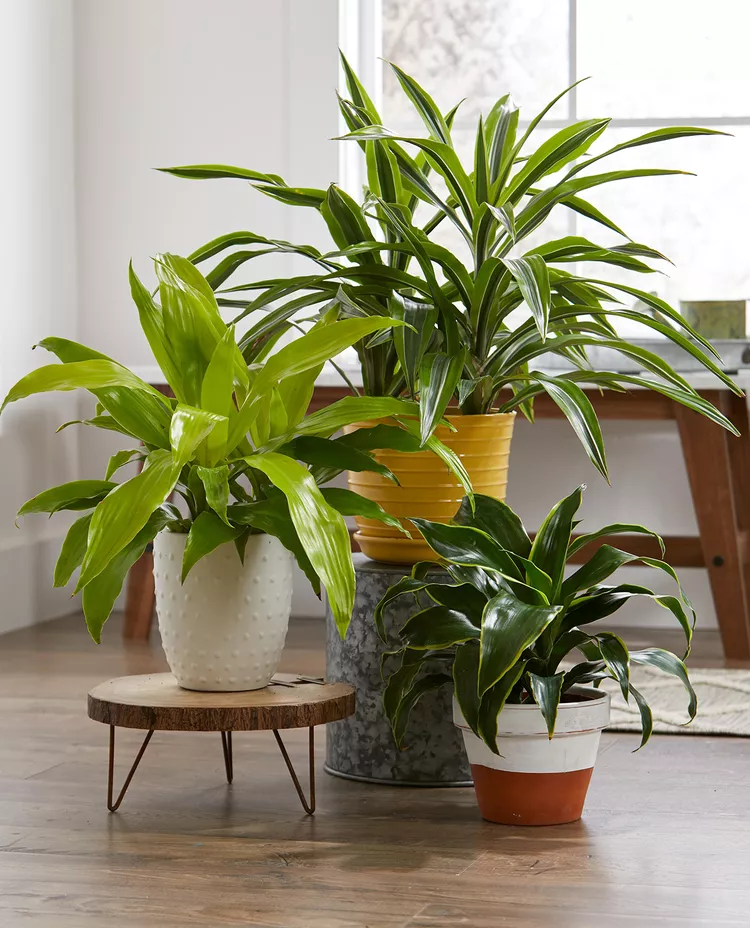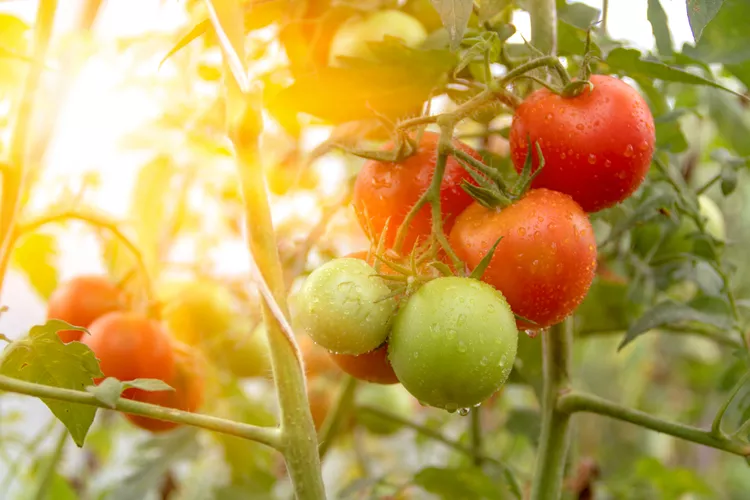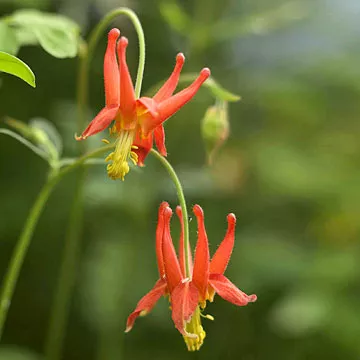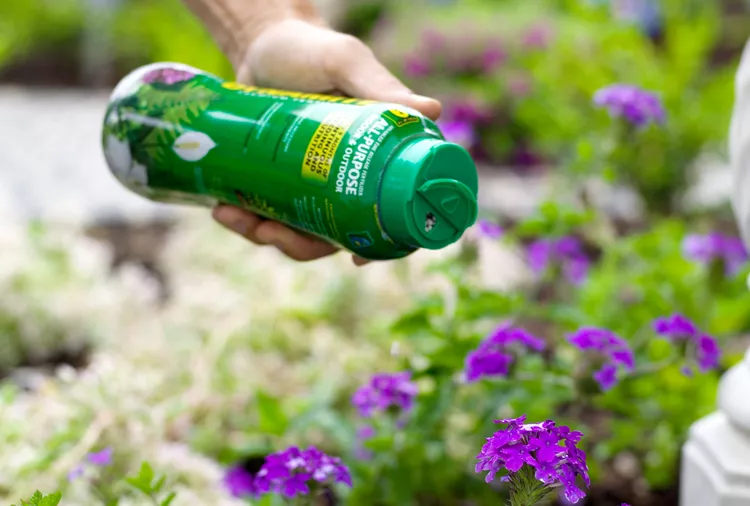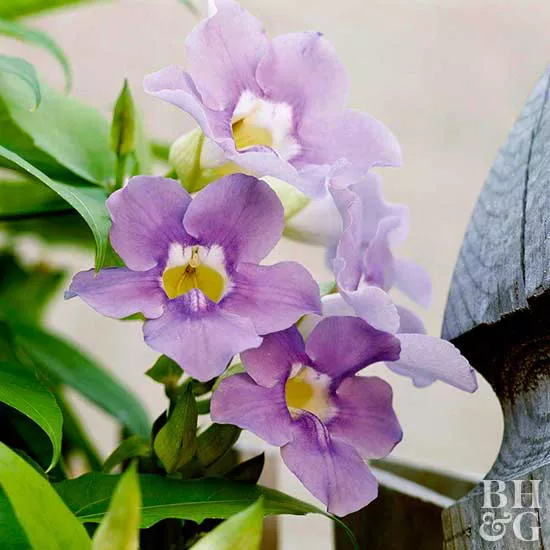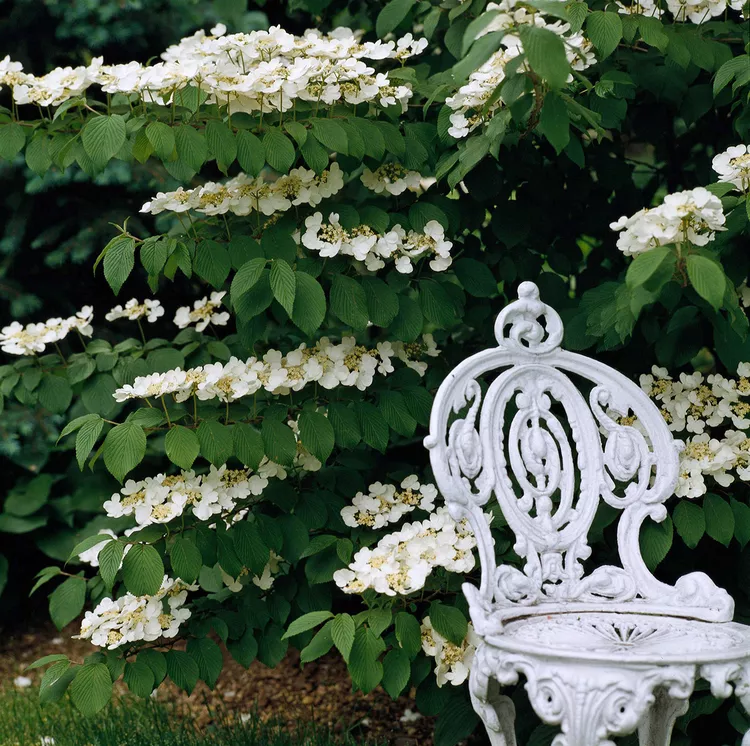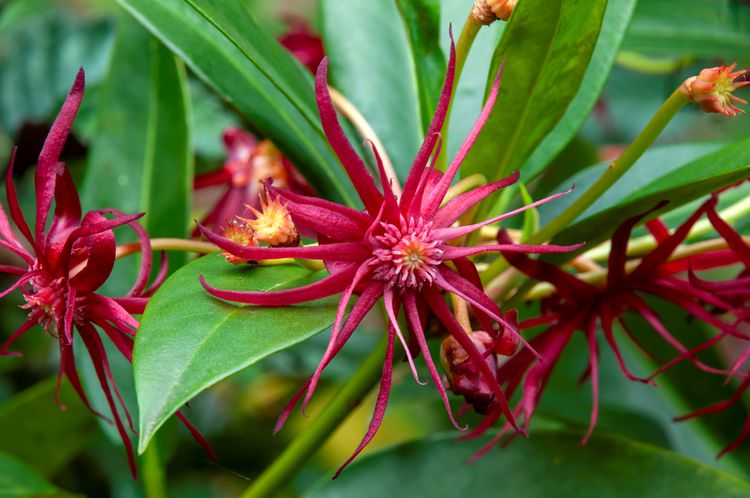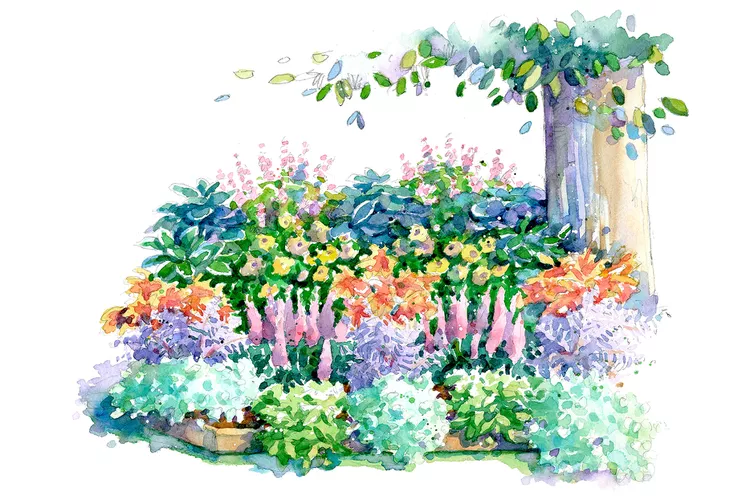Only available in the trade since the early 1990s, osteospermum is a relatively recent addition to the gardening world. With their daisy-like blossoms in many colors, osteospermums were an instant hit. These cheery blooms, planted on their own or with other cool-season plants like pansies, make a lively display in spring or fall.
When osteospermums first became available, they were available in only a few colors, primarily white and peach. Despite a limited color selection, their bright blue-purple centers made them a popular garden choice. After plant breeders got to work, new hues of flowers started appearing, such as pink, purple, and bicolor.
Osteospermum Overview
| Genus Name | Osteospermum |
| Common Name | Osteospermum |
| Plant Type | Annual, Perennial |
| Light | Part Sun, Sun |
| Height | 1 to 3 feet |
| Width | 1 to 2 feet |
| Flower Color | Orange, Pink, Purple, White, Yellow |
| Foliage Color | Blue/Green |
| Season Features | Fall Bloom, Spring Bloom, Summer Bloom |
| Special Features | Attracts Birds, Cut Flowers, Good for Containers, Low Maintenance |
| Zones | 10, 11, 9 |
| Propagation | Seed, Stem Cuttings |
Where to Plant Osteospermum
Osteospermums are most often grown as cool-season annuals. Some varieties are hardy to Zones 10-11 but won't survive very cold temperatures. In many instances, the plants will take a break from blooming during the hot summer until cool nights resume in fall.
Plant trailing or compact varieties of osteospermum in hanging baskets or add them to container gardens. The trailing types make good groundcovers, too. Lavender and Russian sage, with their silvery-blue flowers, are complementary companion plants that require the same soil and water as osteospermum, and they look beautiful contrasted with ornamental grass, such as blue fescue.
How and When to Plant Osteospermum
Plant osteospermum in mid- to late spring, after your area's average final frost date. Dig a hole that's a bit larger than the root ball, place the plant in the hole, and cover with organic matter and soil. Water well when first planted. Keep plants 12 inches apart to allow for growth.
Osteospermum Care Tips
Light
Ideally, osteospermum thrive in full sun; the more light you can give them, the better they will bloom.
Soil and Water
Osteospermum prefers evenly moist, well-drained soils. However, too-wet soil is a sure way to stress out and even kill osteospermums. Once they are established, they are fairly tolerant of drought.
Fertilizer
Add a balanced fertilizer to the soil in spring before planting osteospermum, and apply a liquid fertilizer every two weeks during the summer. Fertilizing your plants regularly and removing any spent blooms keeps osteospermums blooming and looking their best.
Pest and Problems
One common pest you may see on osteospermums is thrips. These tiny insects like to feed on the flowers' pollen and use their sharp mouthparts to scrape the petals for water. This damages buds and contorts new growth. Luckily, there are many other beneficial insects out during the growing season that will keep these pests in check.
How to Propagate Osteospermum
Because most osteospermums are hybrids, they don't usually grow true from seeds, but you can take cuttings of existing plants for exact duplicates to expand your supply of this cool-weather favorite. Select non-flowering shoots and cut them at about 3 to 5 inches. Remove any leaves from the bottom half of the cuttings and dip them in a rooting hormone. Plant them in any well-draining medium to root.
If you don't mind surprises, sprinkle fresh seeds on top of planting medium indoors in late fall; the seeds need light to germinate, so keep them well-lit but cool. They can't tolerate heat. Move the seedlings to individual pots when they are about 3 inches tall and wait until after the last frost in spring to move them outdoors.
Types of Osteospermum
Because this group of plants is still fairly new to the horticultural industry, exciting varieties are popping up every year. Research is being done to create longer-lasting blooms that stay open all day and night. Also, the center disk flowers have been modified to be longer and denser, creating a 3D effect. New colors of osteospermum are constantly being created, as well. Here are some favorites.
'Flower Power Spider White' Osteospermum
Osteospermum 'Flower Power Spider White' shows off an abundance of daisy-shaped blooms with unique spoon-shaped petals. It grows 14 inches tall. Zones 9-11
'Mara' Osteospermum
Osteospermum 'Mara' produces large blooms of apricot-tan petals that blend to a beautiful soft pink at the center. This compact selection grows 10 inches tall. Zones 9-11
'Serenity Lavender Frost' Osteospermum
Osteospermum 'Serenity Lavender Frost' bears white flowers with a lavender-purple center on 14-inch-tall plants. Zones 9-11
'Peach Symphony' Osteospermum
Osteospermum 'Peach Symphony' bears soft, peachy-coral flowers in spring and fall on drought-tolerant plants that grow 14 inches tall. Zones 9-11
'Serenity Purple' Osteospermum
Osteospermum 'Serenity Purple' bears rich-purple flowers on mounding plants that grow 14 inches tall. Zones 9-11
Sideshow Copper Apricot Osteospermum
Osteospermum 'Sideshow Copper Apricot' bears soft apricot-orange flowers with a purple blush on a mounding, 1-foot-tall plant. Zones 9-11
'Soprano Compact Purple' Osteospermum
Osteospermum 'Soprano Compact Purple' bears purple flowers on drought-tolerant, compact plants that grow only 10 inches tall. Zones 9-11
'Soprano Vanilla Spoon' Osteospermum
Osteospermum 'Soprano Vanilla Spoon' bears white flowers with spoon-shaped petals on drought-tolerant, 2-foot-tall plants. Zones 9-11
'Sunny Dark Florence' Osteospermum
Osteospermum 'Sunny Dark Florence' bears orange flowers on a 12-inch-tall plant. Zones 9-11
'Yellow Symphony' Osteospermum
Osteospermum 'Yellow Symphony' bears golden-yellow flowers with purple centers on drought-tolerant, 14-inch-tall plants. Zones 9-11
'Zion Plum' Osteospermum
Osteospermum 'Zion Plum' is a strong-growing selection with blue-purple flowers in spring and fall. It grows 12 inches tall. Zones 9-11
'Zion Sun Yellow' Osteospermum
Osteospermum 'Zion Sun Yellow' is a vigorous selection with yellow flowers in spring and fall. It grows 12 inches tall. Zones 9-11
Osteospermum Companion Plants
Dianthus
The quintessential cottage flower, pinks are treasured for their grasslike blue-green foliage and abundant starry flowers, which are often spicily fragrant. Depending on the type of pink, flowers appear in spring or summer and tend to be pink, red, white, rose, or lavender, but come in nearly all shades except true blue. Plants range from tiny creeping groundcovers to 30-inch-tall flowers, which are a favorite with florists.
Heliotrope
Even without its fabulous scent, heliotrope would be widely grown in the garden. Some say it smells like cherry pie, some say a grape ice pop, and others say vanilla. Regardless, it is undeniably one of the most intriguingly scented plants in the garden. As a bonus, this tropical plant, grown as an annual, bears big clusters of rich purple, blue, or white flowers. Heliotrope thrives in a spot with full sun and moist, well-drained soil.
It's a great container plant; try it in a window box or next to a doorway where you can enjoy it frequently. For the strongest scent, group several plants together where they can get afternoon sun. The warming sun will release their fragrance.
Snapdragon
Few gardens should be without the easy charm of snapdragons. They get their name because you can gently squeeze the sides of the intricately shaped flower and see the jaws of a dragon head snap closed. The blooms come in gorgeous colors, including some with color variations on each flower. Plus, snapdragons are an outstanding cut flower. Gather a dozen or more in a small vase, and you'll have one of the prettiest bouquets around.
Snapdragons are especially useful because they're a cool-season annual, coming into their own in early spring when the warm-season annuals, such as marigolds and impatiens, are being planted. They're also great for fall color. Plant snapdragon in early spring, a few weeks before your region's last frost date. Deadhead regularly for best bloom and fertilize regularly. Snapdragons often self-seed in the landscape if not deadheaded, so they come back year after year, though the colors from hybrid plants will often end up muddy-looking. In mild regions, the entire plant may overwinter if covered with mulch.
Garden Plan for Osteospermum
Soften a Fence With This Lush Border Garden Plan
Use our free garden plan to transform your backyard fence from a boring, blank space into a pleasing backdrop for a gorgeous flower border.

